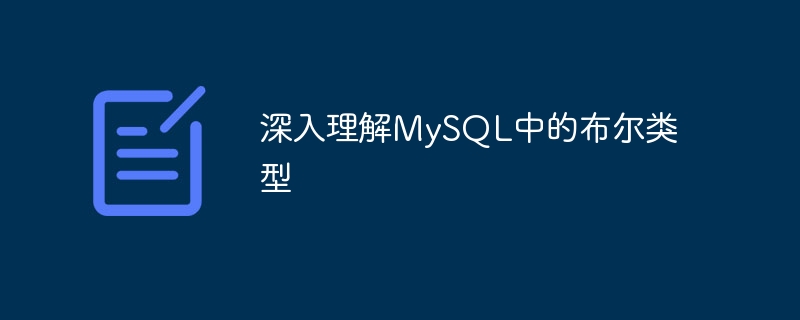

The Boolean type in MySQL is a very practical data type. It is used to store logical values and can only take two values: TRUE or FALSE. In MySQL, the Boolean type is also called BOOL or BOOLEAN and can be represented by TINYINT(1). In this article, we will delve into the definition, usage, and specific code examples of the Boolean type in MySQL.
First, let’s take a look at how to define a Boolean column in MySQL:
CREATE TABLE users (
id INT NOT NULL AUTO_INCREMENT PRIMARY KEY,
name VARCHAR(50) NOT NULL,
active BOOLEAN
);In the above code, we created a table named "users", which contains three columns: id, name and active. The active column is defined as a Boolean column used to indicate whether the user is active. Here, a Boolean type column can store a value of TRUE or FALSE or 1 or 0.
Let us demonstrate some specific code examples about Boolean types:
INSERT INTO users(name, active) VALUES ('Alice', TRUE);
INSERT INTO users(name, active) VALUES('Bob', FALSE);In the above code, we inserted two records into the "users" table, one active is TRUE and the other active is FALSE.
UPDATE users SET active = FALSE WHERE name = 'Alice';
In the above code, we updated the name The active state of the user Alice is FALSE.
SELECT name, active FROM users WHERE active = TRUE;
In the above code, we query all active TRUE for user records.
In addition to the above basic operations, Boolean types can also be used with other operators, such as AND, OR and other logical operators:
SELECT name, active FROM users WHERE active = TRUE AND id < 10;
The above code queries user records whose id is less than 10 and active is TRUE.
In general, a deep understanding of the Boolean type in MySQL requires us to be proficient in its definition, usage and use in combination with other operators. Through the introduction and code examples of this article, I believe readers can more clearly understand the concepts and applications of Boolean types in MySQL.
The above is the detailed content of In-depth understanding of Boolean types in MySQL. For more information, please follow other related articles on the PHP Chinese website!




